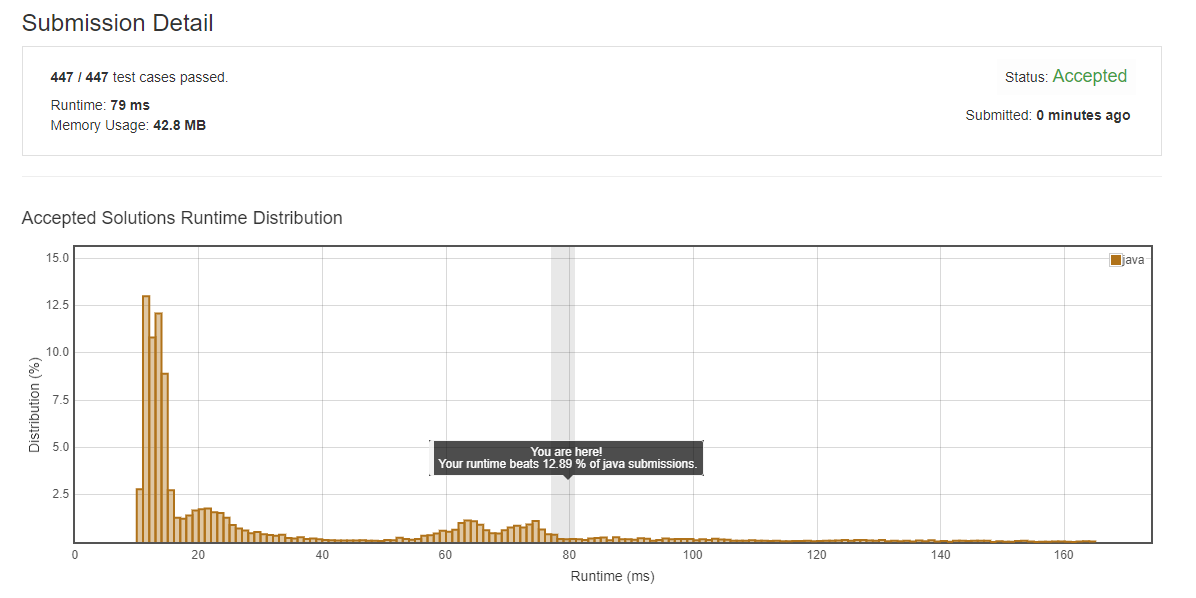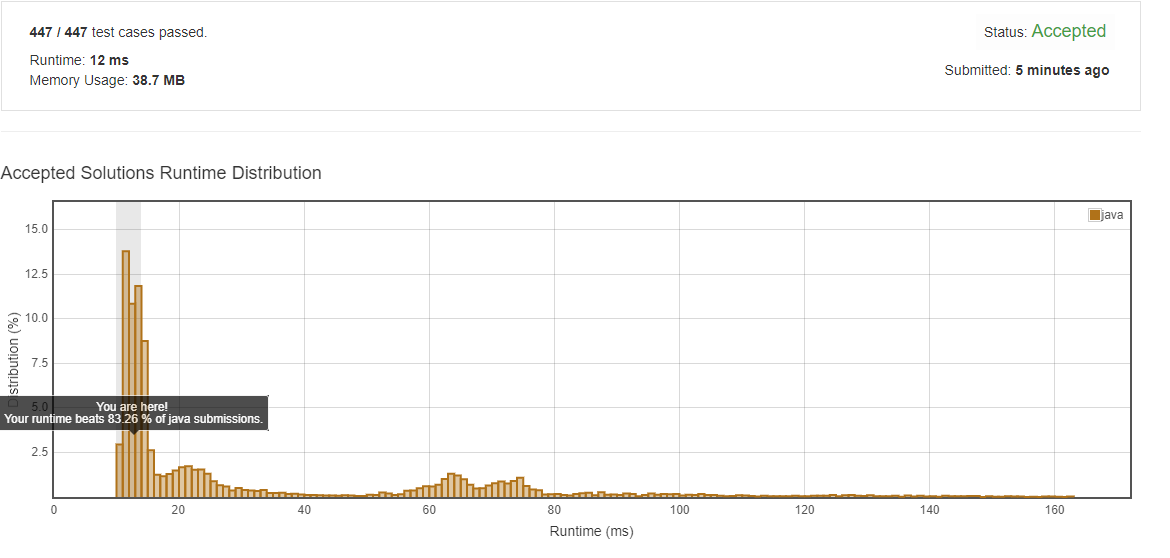LeetCode 10 正则表达式匹配(难度:Hard)
题意:正则表达式匹配
Given an input string (s) and a pattern (p), implement regular expression matching with support for '.' and '*'.
'.' Matches any single character.'*' Matches zero or more of the preceding element.
The matching should cover the entire input string (not partial).
Note:
scould be empty and contains only lowercase lettersa-z.pcould be empty and contains only lowercase lettersa-z, and characters like.or*.
Example 1:
Input:s = "aa"p = "a"Output: falseExplanation: "a" does not match the entire string "aa".
Example 2:
Input:s = "aa"p = "a*"Output: trueExplanation: '*' means zero or more of the precedeng element, 'a'. Therefore, by repeating 'a' once, it becomes "aa".
Example 3:
Input:s = "ab"p = ".*"Output: trueExplanation: ".*" means "zero or more (*) of any character (.)".
Example 4:
Input:s = "aab"p = "c*a*b"Output: trueExplanation: c can be repeated 0 times, a can be repeated 1 time. Therefore it matches "aab".
Example 5:
Input:s = "mississippi"p = "mis*is*p*."Output: false
正则表达式匹配,关键就是匹配这俩字。首先,有两个对象,比较这两个对象,只有一模一样才叫做匹配。从 note 看,
scould be empty and contains only lowercase lettersa-z.pcould be empty and contains only lowercase lettersa-z, and characters like.or*.
输入串s 可为空 或者 只包含小写字母 (a-z)
样品 p 可为空 或者 包含唯一一个小写字母(a-z)和 ‘ . ‘ ‘ * ‘ 这两个特殊字符
‘.’ Matches any single character. ‘.’ 可变成任意一个单字符
‘*‘ Matches zero or more of the preceding element. ‘*‘ 可让在其最前面的一个字符重复 0 或 n 次 (0 次表示其前一个字符消失)
第一种解法: 递归
package pers.leetcode;/*** LeetCode 10 正则表达式匹配* 难度: Hard** @author 朱景辉* @date 2019/3/21 9:49*/public class RegularExpressionMatching {public static void main(String[] args) {String s = "ab";String p = ".*c";System.out.println("是否匹配: " + isMatch(s, p));}public static boolean isMatch(String text, String pattern){// 先处理特殊情况,pattern 为空的情况下,text为空返回true,否则返回falseif (pattern.isEmpty()){return text.isEmpty();}// 首先比较双方第一个字符是否相同,2 种情况// 1. 两者第一个字符相同// 2. pattern 的第一个字符是 '.'boolean first_match = (!text.isEmpty() && (pattern.charAt(0) == text.charAt(0) || pattern.charAt(0) == '.'));// 递归处理两种情况// 1. pattern长度大于等于 2 ,且第 2 个字符为'*'// 2. 要么 pattern 长度为1,要么长度大于等于 2,但第二个字符不为 '*'if (pattern.length() >= 2 && pattern.charAt(1) == '*'){// 这里返回也有两种情况// 1. '*' 将其前一个字符置空,再从 text 的第一个字符 与 pattern 的第三个字符匹配// 2. '*' 目前重复 1 次, 与 text 第一个字符匹配到了,再用 text 的第二个字符 与 pattern 的第一个字符匹配return (isMatch(text, pattern.substring(2)) || (first_match && isMatch(text.substring(1), pattern)));}else {// 只有双方第一个字符相同 且 剩余字符匹配 才返回 truereturn first_match && isMatch(text.substring(1), pattern.substring(1));}}}
运行结果:

第二种解法:动态规划。。。现在不想写了
2019/9/22 补上
/*** 动态规划** @param text 给定字符串* @param pattern 匹配字符串* @return 匹配结果*/public static boolean isMatch2(String text, String pattern){boolean[][] dp = new boolean[text.length() + 1][pattern.length() +1];dp[text.length()][pattern.length()] = true;for (int i = text.length(); i >= 0; i--){for (int j = pattern.length() - 1; j>= 0; j--){// 双方最后一个字符是否相同 或者 pattern 最后一个字符为 '.'boolean first_match = (i < text.length() && (pattern.charAt(j) == text.charAt(i) || pattern.charAt(j) == '.'));// 1. 从 pattern 倒数第二个字符起, 凡是等于 '*' 的情况// 2. 不等于 '*'if (j + 1 < pattern.length() && pattern.charAt(j+1) == '*'){dp[i][j] = dp[i][j+2] || first_match && dp[i+1][j];}else {dp[i][j] = first_match && dp[i+1][j+1];}}}return dp[0][0];}

明显的,动态规划比递归快了 N 倍



































还没有评论,来说两句吧...